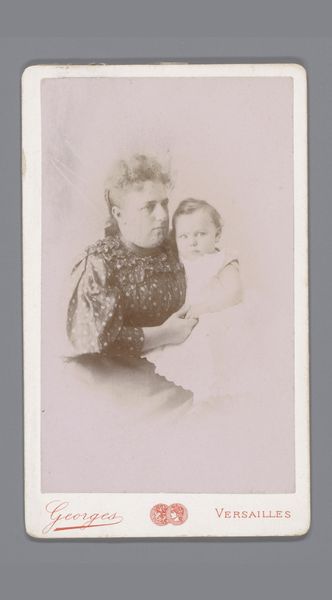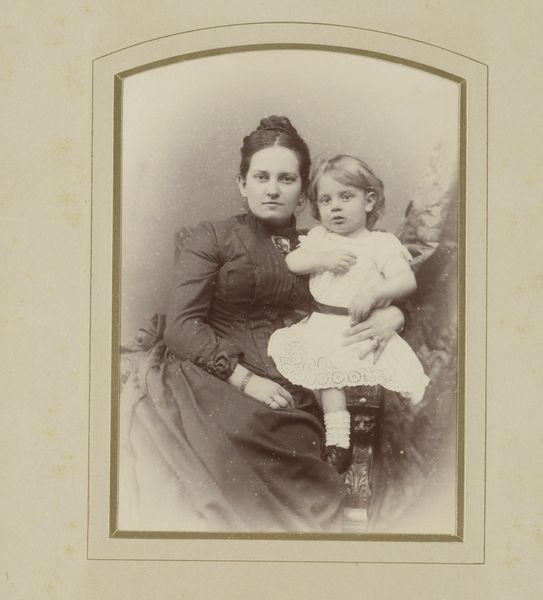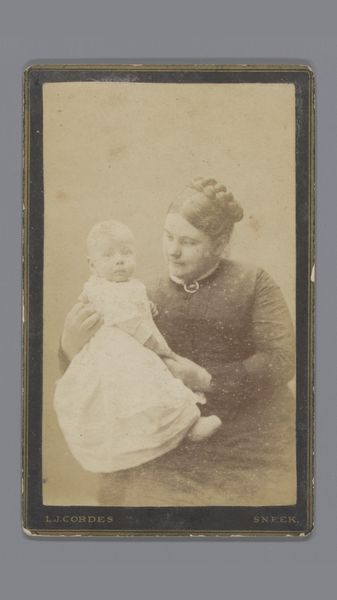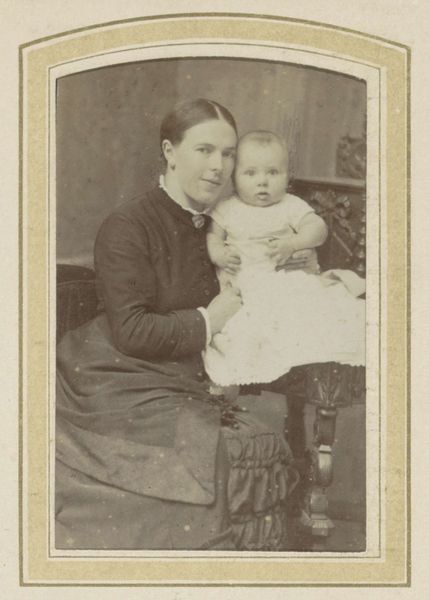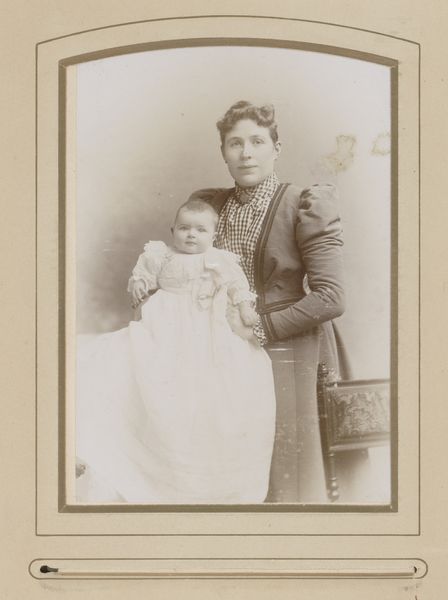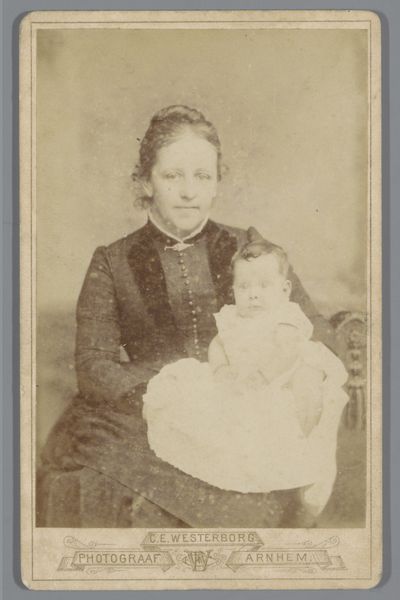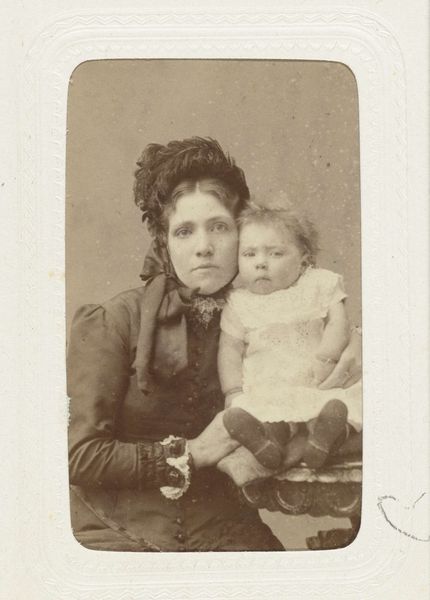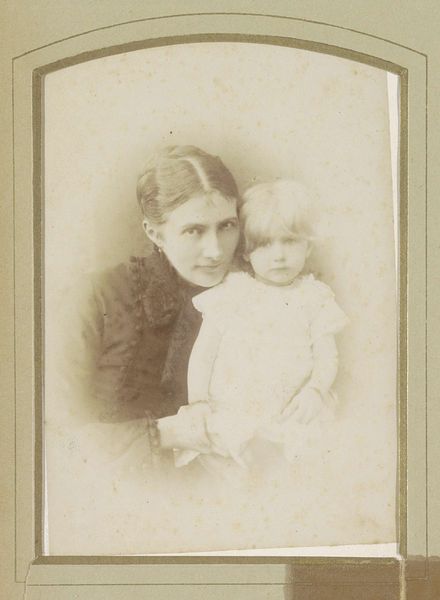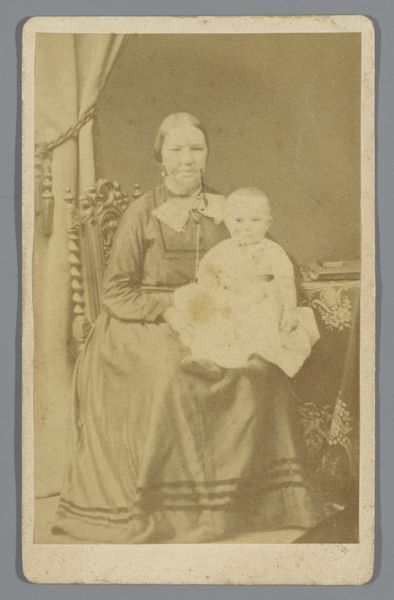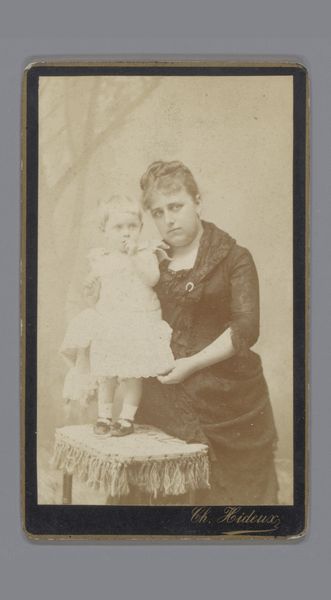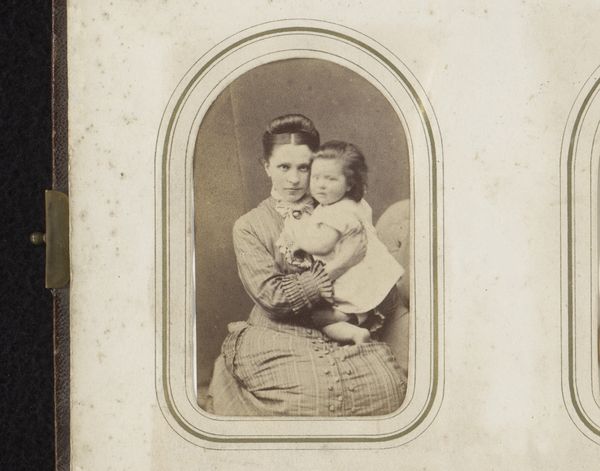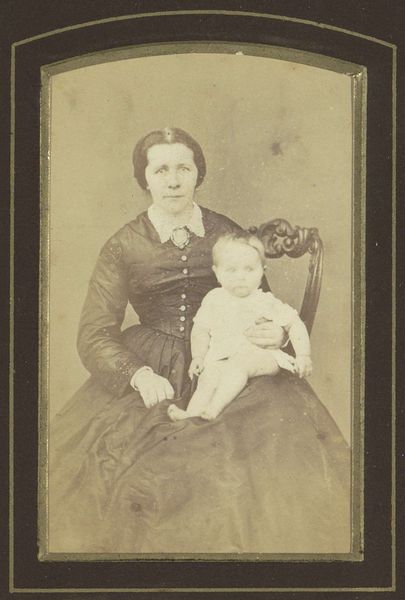
photography
#
portrait
#
still-life-photography
#
mother
#
photography
#
historical photography
#
genre-painting
Dimensions: height 103 mm, width 64 mm
Copyright: Rijks Museum: Open Domain
This photographic portrait, possibly from the late 19th century by the Hisgen Brothers, captures a mother and child in a formal, composed manner. The sepia tones lend a nostalgic quality, while the subjects' direct gaze creates an intimate, if somewhat stoic, connection with the viewer. The composition is structured around a central, stable pyramid formed by the mother and child. The mother’s dark dress and the baby’s white gown create a contrast that highlights their relationship. The lines of their bodies, along with the ornate details of the mother’s attire, contribute to a sense of structured elegance typical of portraiture of this era. The photograph functions as more than just a record of appearance; it signifies social values and notions of family. This portrait uses the formal elements of photography to reinforce societal norms of maternal love and domesticity. Its enduring appeal lies in how it allows us to reflect on the evolving meanings of family and representation.
Comments
No comments
Be the first to comment and join the conversation on the ultimate creative platform.
